High density planting in your own backyard can give you up to 5x more fruit, flowers and space for herbs. While you should usually give citrus trees up to 6 feet of space, you can planting things closer, with more diversity and still get lots of production.
I have a tiny backyard and grow a huge variety of plants close together. I grow fruit trees, flowers, herbs and vegetables all in a small space.
There are a few easy steps to keep a densely planted garden growing well. Here are my top tips to grow more fruit, herbs and vegetables in a small garden.

What high density planting means at home
While high density planting can be applied on a commercial scale, you can take advantage of a small space by planting a forest of foods and flowers closely together. High density planting means planting closer together than the usual recommendations but supporting that with lots of nutrients, good quality soil and mulch.

Why you should try high density planting
High density planting will help to protect plants from pests as the diversity of flowers and shrubs can distract pests from attacking a single row of broccoli or strawberries. You can grow more than 1 fruit tree in a tiny space, even planting more than 1 tree in the same hole.

Creating a forest in your own backyard
Creating a forest in your own backyard will give you a range of fruit including citrus, apple trees and berries or vegetables. I have a small space of only 20×20 feet and have managed to fit a orange tree, lemon, lime, mango tree as well as raspberries, blueberries and strawberries.
Between all of these trees I have flowers and herbs including creeping thyme, violas and daisies. This brings bees to visit my fruit trees to pollinate and the ground cover herbs help to shade the soil.
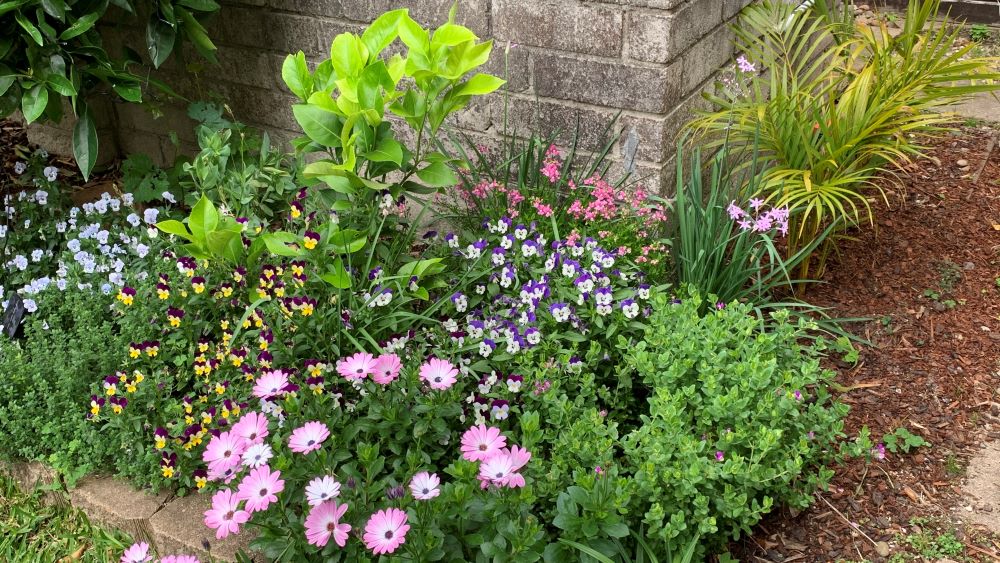
Benefits of high density planting
My favorite parts of high density planting is my ability to grow such a range of fruit and flowers in a tiny space. While we are living in a tiny house at the moment, we can still grow a range of fruit, indulge my love of gardening and fit everything I need to in a tiny space.
Being forced to garden in a tiny space means that I need to get creative with what I plant, how I plant things and take advantage of the tiny amount of soil I have access to. I can grow strawberries for the kids to pick and flowers for me to stare at while I sit and write.

How to succeed in high density planting
Here are my top tips to successfully grow a food forest, a dense coverage of flowers, all of the herbs I need and vegetables.
Diversity
Diversity is key in high density planting. Planting a range of fruit trees or flowers close together works best when you are planting different trees and flowers close together. A mango tree will fit neatly over the top of a lime tree.
Tall growing bushy plants can set the background for shorter beautiful flowers. Tall strappy plants like society garlic can fill the holes between any planting and can be dug up and divided each year.
I love planting clivias in a dark corner that nothing else will grow in. Fill a shady spot with a green cover and bright orange flowers. I have planted mine near my lime tree which helps to shade the soil and prevent it from drying out.
Good soil
Good quality soil is essential for dense planting at home. When planting trees, shrubs and vegetables close together you will need to make sure they are planted in good soil. Good soil will contain more nutrients, drain well and help the plants to get the nutrients they need without competing.
Set up good quality soil by mixing through aged cow manure, chicken manure and compost first. Add some pelleted chicken manure and this will create rich soil to plant anything you like into. I added a whole bag of cow manure to the soil before planting my mango tree which means I can grow it within 1 foot of small shrubs.
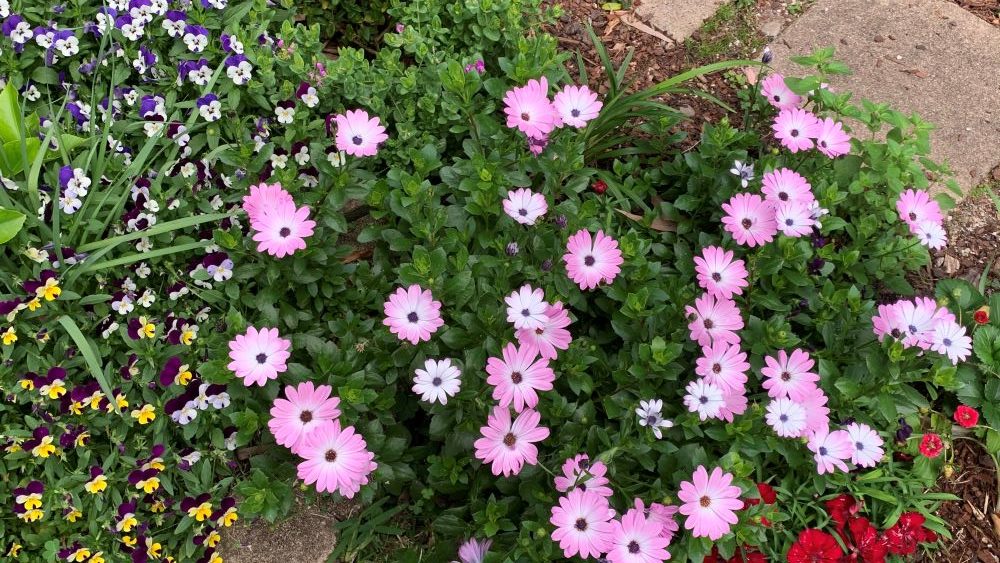
Water
Densely planted fruit trees will need regular water and may need extra if they are planted close to thirsty plants. While small annual flowers can shade the soil they will also absorb surface water away from the roots which can cause the tree to struggle.
I have interplanted mint with some native grasses and clivia and all are thriving. They do need extra water however as mint is thirsty and absorbs a lot of water. The grasses are drought tolerant and the clivia is still multiplying with a bit more water than usual.
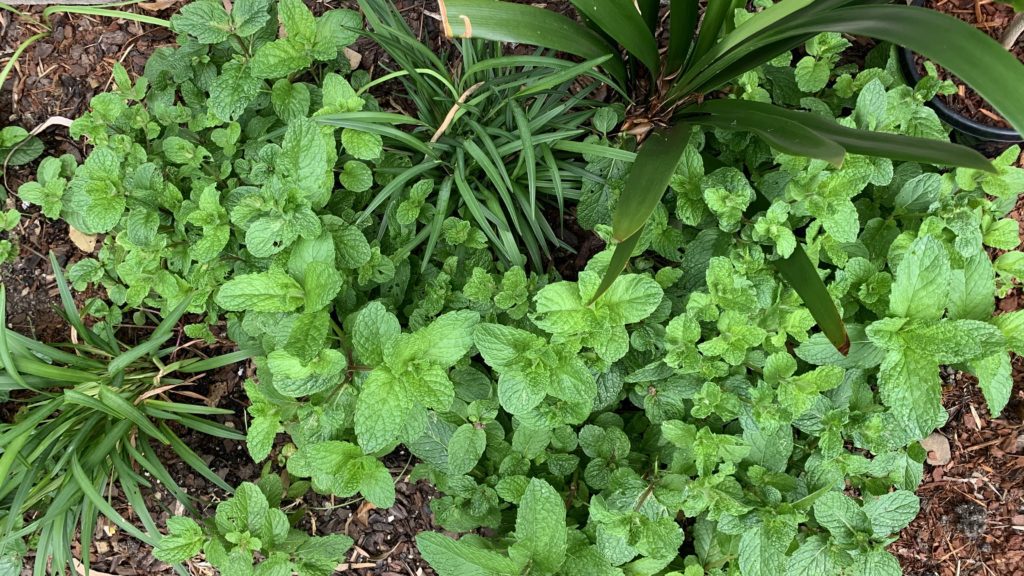
Nutrients
For a densely planted yard you will need to add fertilizer regularly. For citrus trees, I will add pelleted chicken manure every month over spring to give them enough nutrients. This is more than you would usually need to add but the nearby annual flowers are absorbing nitrogen which is essential for good growth.
Choosing the right plants
Make sure you choose the right plants for the right position when planting things close together. Consider sun, shade, root zones, flowers, nutrient requirements and ground covers. Place clivia in a corner that gets lots of shade, plant bright annual flowers at the front of the garden bed so they get the most sun.
Take time to observe your garden before you plant things out. Have a look at where the shade falls and where the afternoon sun hits. Be flexible and don’t worry if you plant something in the wrong spot. Most plants can be dug up and moved if you find you have placed it in the wrong spot.
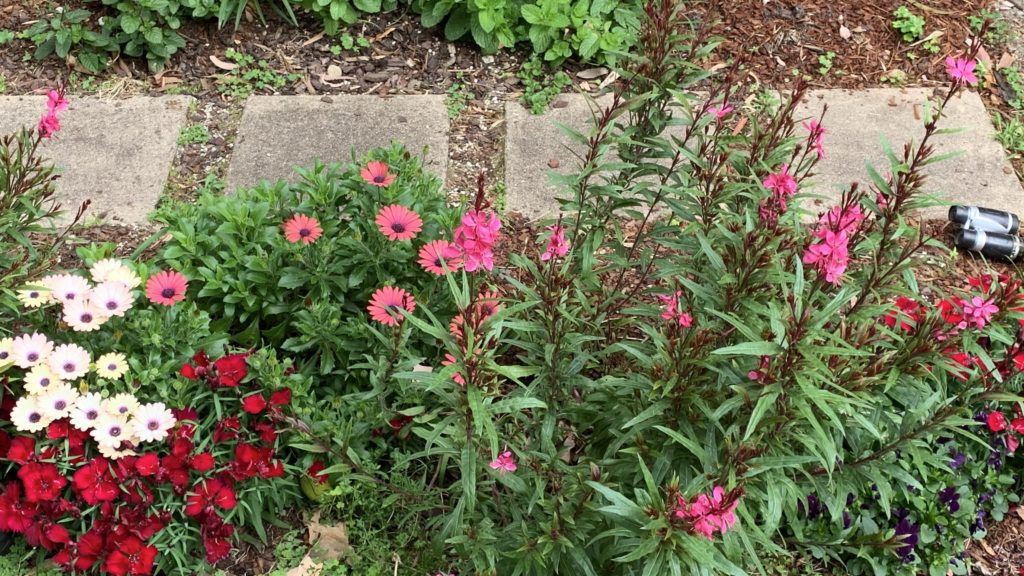
Plant in pots
To place plants closer to the base of fruit trees you can plant in pots and place it on top of the soil near the stem. This way it won’t compete for soil or nutrients and the fruit tree will get the extra water that drains out the bottom of the pot.
You can plant wildflowers in boxes and place them in a gap. After they have finished, you can break the box, rake the soil over the top and this is an easy way to top dress.
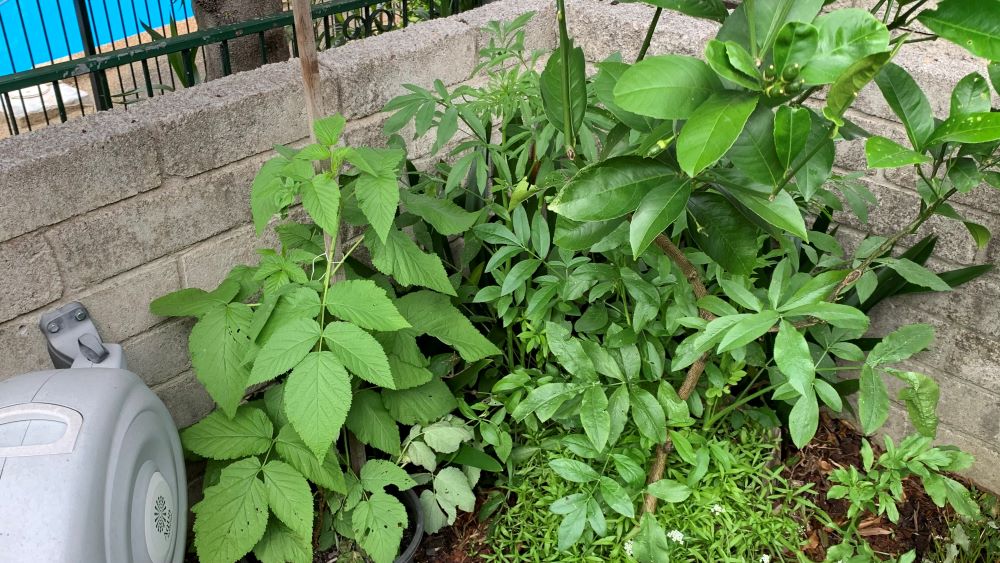
High Density Planting | Summary
High density planting is one of my favorite ways to grow food in my garden. I interplant fruit tree with vegetables, herbs and flowers to create a diverse garden that gives me everything I want from a small space.
Good soil is the key to dense planting, mulch the soil and water the plants well. Closely planted shrubs will shade the soil and annual flowers and herbs can work to shade the soil to keep it moist.
Plant things closer together in your own garden by following these easy tips and get the most out of your space.
Happy growing.
I am an accredited practicing dietitian, experienced gardener and a dedicated cook. I love writing and sharing my experience so you can learn from my successes and mistakes.
